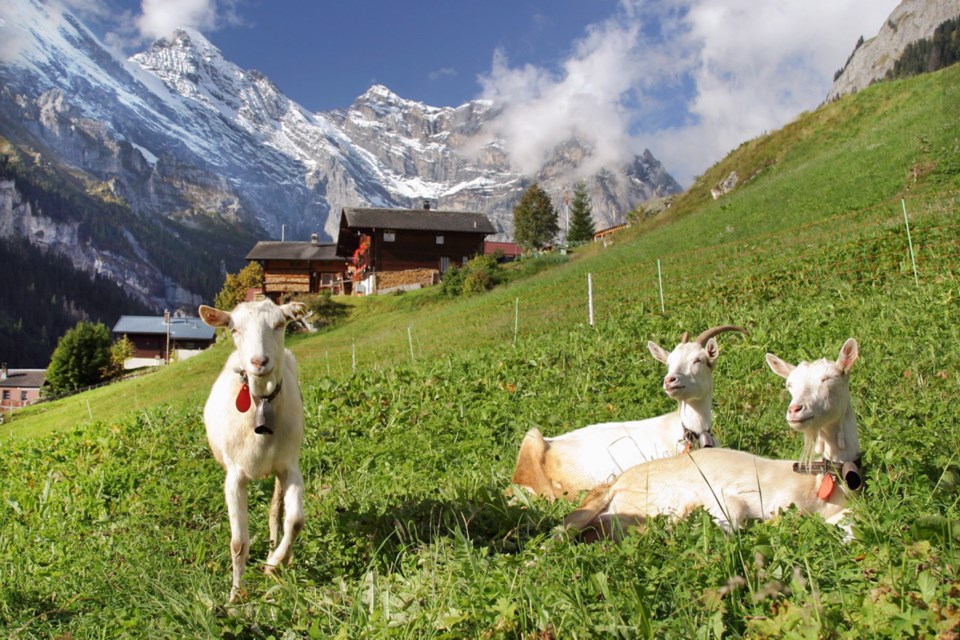In my early days as a guidebook writer, EuropeÔÇÖs undiscovered nooks and undeveloped crannies held the most appeal for me ÔÇö and they still do. But with ever more sophisticated travellers armed with enough time and money to see the Europe of their dreams, places I ÔÇ£discoveredÔÇØ a few decades ago are now suffering from ÔÇ£back doorÔÇØ congestion.
Given that, IÔÇÖve come to treasure even more those destinations that still have the feeling of being a world apart from everyday life. Away from the tourist fray, these special spots are backwaters in the best sense of the word, each with its own genuine charm.
It typically takes a little extra effort to reach such places, but the reward is considerable. Gimmelwald, a remote and impossibly idyllic village high in the Swiss Alps, is a classic example. Parking your car in the valley floor and riding the cable car up is like going through a looking glass.
Your car shrinks, your stomach flip-flops and you look over the valley as though suspended from a hang glider. Then, suddenly, the cable-car doors slide open and youÔÇÖre deposited ÔÇö as if from a magical glass bubble ÔÇö into another world. ItÔÇÖs a place where the air is clean and sharp, where the only noises are bees, bugs and birds pursuing alpine flowers, and where gnome-like men sucking gnome-like pipes are busy chopping firewood.
Or take the island of ├år├©. Few visitors to Scandinavia even notice this tiny island on DenmarkÔÇÖs southern edge (itÔÇÖs four hours by train from Copenhagen). In the main town, ├år├©sk├©bing, you can amble down cobbled lanes right out of the 1680s, when the town was the wealthy home port of commercial sailing ships.
What is there to do in this time-passed place? Not much. Wander the town on a photo safari or pedal a rented bike beyond the cobbled town streets into the essence of seaside Denmark. Enjoy a picnic dinner out on the islandÔÇÖs spit as the late summer sun sets, and dig your toes into the still-warm sand. ItÔÇÖs a perfect Danish scene that takes ÔÇ£cosyÔÇØ to enjoyable extremes.
PortugalÔÇÖs beachy south coast is well discovered now, but one bit of old magic still glitters quietly in the sun: Salema. Near the far southwest tip of Europe, this longtime fishing village is at the end of a small road thatÔÇÖs only recently been paved. There are a dozen or so restaurants, a few hotels and endless summer sun. Most important, it has a long, broad, gorgeous beach, luxurious with powder-fine sand.
These days, Salema is just barely a fishing village, with only six or eight working boats. At night, youÔÇÖll see evenly spaced lights bobbing on the horizon: Those are the fisherman, out in search of squid, sardines and octopi. The catch that flops into the boats is bound for the market and ÔÇö who knows ÔÇö maybe onto your beachfront dinner plate. Eating like a ÔÇ£locavoreÔÇØ isnÔÇÖt a trend in Salema; itÔÇÖs the way itÔÇÖs always been.
Far to the north, strewn like limestone chips hammered off IrelandÔÇÖs jagged west coast, the Aran Islands confront the wild Atlantic with stubborn grit. Bleak and beautiful Inishmore, the largest, is 15 kilometres of weather-beaten rock with one town. Inhabitants eke out a simple livelihood from a mean sea and less than 15 centimetres of topsoil.
Tourism is a true boon to the tough economy of the starkly beautiful island, which has one must-see sight: Dun Aengus. This Iron Age stone fortress hangs spectacularly and precariously on the edge of a sheer cliff. Even at the height of tourist season (especially if you come early or late in the day), you can be alone here, high above the crashing Atlantic, feeling like the westernmost person in Europe.
Little Civita di Bagnoregio is definitely a world apart, teetering atop a pinnacle in a vast canyon an hour north of Rome. To reach this hill town, you leave your car behind, walk across an elevated path, pass through a cut in the rock made by Etruscans 2,500 years ago and head under a 12th-century arch.
Inside the gate, the charms of Civita are subtle. There are no lists of attractions, orientation tours or museum hours. ItÔÇÖs just Italy. The warm stone walls glow, and each stairway is an invitation to take out a sketch pad or camera. Take a seat on the church steps and observe the scene. They say that in a big city you can see a lot, but in a small town like this you can feel a lot.
With crowds becoming a problem across the continent, sampling such ÔÇ£world apartÔÇØ destinations is a smart way to experience Europe. They might be quieter and less flashy than the blockbuster sights, but these little gems are guaranteed to create enduring travel memories.
Rick Steves (ricksteves.com) writes European travel guidebooks and hosts travel shows on public television and public radio. Email him at [email protected] and follow his blog on Facebook.



